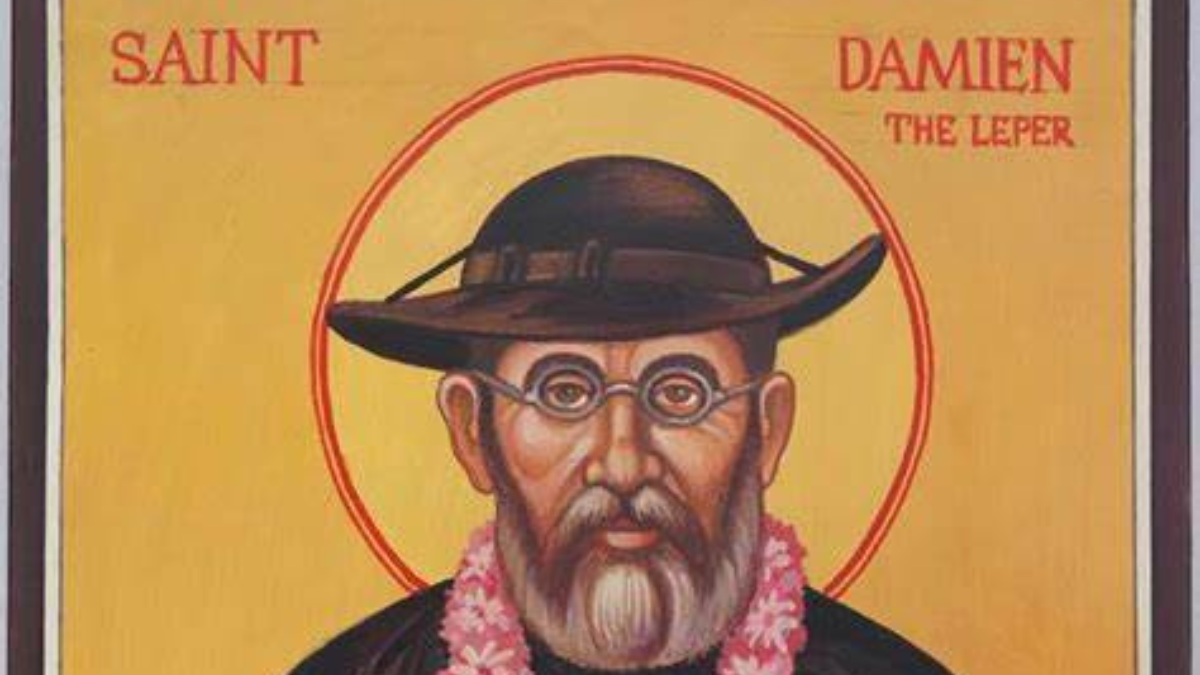
 Add to favorites
Add to favoritesSt. Damien of Molokai
| Feast day | September 25 |
| Patron | of Cork, Diocese of Cork |
| Birth | 550 |
| Death | 620 |
The man who would become St. Damien of Molokai, was born in rural Belgium, on January 3, 1840. His name was Jozef De Veuster, and he was the youngest of seven children. Growing up on the farm, Jozef was prepared to take over for his family, but he did not want the responsibility. Instead, he wanted to follow his older brother and two sisters who took religious vows.
Jozef attended school until the age of 13 when his help was needed on the family farm full-time. He aided his family until he was old enough to enter the Congregation of the Sacred Hearts of Jesus and Mary. He took the name Damien, after a sixth century martyr.
In 1864, Damien’s brother who was also in the same order of religious, was ordered to Hawaii. But his brother became ill, so Br. Damien offered to go in his place.
The brothers worried that Br. Damien was too uneducated to become a priest, although he was not considered unintelligent. Br. Damien demonstrated his ability by quickly learning Latin from his brother. He was also devoted in prayer, Br. Damien prayed each day before an icon of Saint Francis Xavier to be sent on a mission.
Eventually, his religious brothers agreed to send him and have him ordained.
Br. Damien arrived in Hawaii in March 1864, and was ordained as a priest on the island of Hawaii two months later. For nine years, he worked on the island as a priest, leading an important, yet undistinguished life.
In 1866, Hawaii established a leper colony on the Kalaupapa Peninsula. It was still mistakenly believed that leprosy was highly contagious. This belief resulted in the forced quarantine of leprosy patients.
These people still needed spiritual and medical care, so to Fr. Damien discerned his call to serve them. In 1873, Fr. Damien made the trip to be with these people in their colony.
Upon arrival, he found the colony was poorly maintained. Anarchy reigned among the people living there. Many patients required treatment but had nobody to care for them. Other patients took to drinking and became severe alcoholics. Every kind of immorality and misbehavior was on display in the lawless colony. There was no law or order.
Fr. Damien realized the people needed leadership, so he provided it. He asked people to come together to build houses and schools and eventually the parish church, St. Philomena. The church still stands today.
The sick were cared for and the dead buried. Order and routine made the colony livable. Fr. Damien personally provided much of the care the people needed.
He was supposed to only work in the colony for a time then he would be replaced by one of three other volunteers for the work. But the leper colony was to become his permanent home. After working with the people for a time Fr. Damien grew attached to the people and his work. He asked permission to stay at the colony to serve. His request was granted.
Leprosy is not as contagious as most people of the period assumed, however five percent of the human population is susceptible. The disease can also take several years to show symptoms.
Fr. Daminen became one of those people. He contracted leprosy in 1885, after several years of work. He realized he had the disease when he placed his foot into scalding water by accident, but felt no pain. This was a common way by which people discovered they were infected. Leprosy attacks nerve endings and a victim may hurt themselves but not feel any pain.
Fr. Damien continued his work, despite his illness, which slowly took over his body. He derived strength from prayer and devotion. He often went to the cemetery to pray the Rosary or spent time in the presence of the Eucharist. “It is at the foot of the altar that we find the strength we need in our isolation,” he wrote.
By all accounts, Fr. Daminen was courageous, headstrong and resilient. His personal toughness served to inspire others. He was also reportedly very happy, a common phenomenon for those who pray and work hard to serve others and the Lord.
After sixteen years in the colony, Fr. Damien succumbed to leprosy on April 15, 1889. He was first buried nearby, then his remains were transferred to Belgium in 1936. His right hand was returned to Hawaii in 1995 to be reburied in his original grave at Molokai.
He was beatified by Pope John Paul II in Brussels, Belgium on June 4, 1995. His sainthood was confirmed on October 11, 2009 by Pope Benedict XVI. His feast day is May 10.
The day of his passing, April 15, is a minor statewide holiday in Hawaii.
Saint Damien is the patron saint of people suffering from leprosy.
Views: 8


